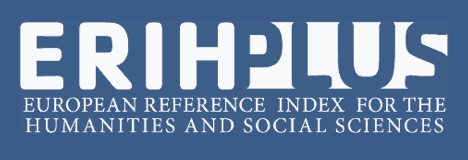Landscape approach for students with visual deficiency: pathways for a curriculum that goes beyond traditional geography
Abstract
The present article presents the result of a methodological proposal to work the landscape category in Geography classes for students with visual impairment. The research was carried out in four stages: interview with a professional of the Nucleus of Assistance to People with Special Educational Needs (NAPNEE) of the University College of the Federal University of Maranhão (COLUN), dialogue with a blind student; (SASSAKI, 2003), Sena and Carmo (2005), Santos and Chiapetti (2014), among others. In this paper we present a discussion of the methodology and finally the application of the pedagogical intervention focused on the field teaching tool. As a result, there is the methodological practice that provides experiences in the geographic space, discussing the characteristics of the landscape in the perception of the blind student, besides the reflection on the inclusion of these students in the geography classes.
References
BRASIL, Lei de Diretrizes e Bases da Educação Nacional: Lei nº 9.394, de 20 de dezembro de 1996, que estabelece as diretrizes e bases da educação nacional. – 11. ed. – Brasília : Câmara dos Deputados, Edições Câmara, 2015. – (Série legislação ; n. 159).
BUENO, S. T.; et al. Deficiência Visual Aspectos Psicoevolutivos e Educativos. São Paulo: Santos, 2003.
CALLAI, H. C. Aprendendo a Ler o Mundo: A Geografia nos anos iniciais do Ensino Fundamental. Cad. Cedes, Campinas, vol. 25, n. 66, p. 227-247, maio/ago. 2005. Disponível em:
CASTROGIOVANNI, A. C.; CALLAI, H. C.; KAERCHER, N. A. Geografia em sala de aula: práticas e reflexões. Porto Alegre: ed. da Universidade Federal do Rio Grande do Sul / AGB – seção Porto Alegre, 1999.
GAUTHIER, C.; MARTNEAU, S.; DESBIENS, J.; MALO, A.; SIMARD, D. Por uma Teoria da Pedagogia: pesquisas contemporâneas sobre o saber docente. Ijuí (RS): Unijuí, 1998. p.17-37; p.43-81; p.240-279.
HUMMEL, E. I.; VITALIANO, C. R. A formação de professores para uso da informática no processo de ensino e aprendizagem de alunos com necessidades educacionais especiais em classe comum. In: VITALIANO, Célia Regina (Org.). A formação de professores para inclusão de alunos com necessidades educacionais especiais. Londrina: EDUEL, 2010. p.113-159.
PORTO, E. A Corporalidade do Cego: novos olhares. São Paulo: Cortez, 2007.
ROCHA, G. O. R. D. A Geografia escolar brasileira nos fins do século XIX: revisitando os pareceres de Ruy Barbosa de 1882. Ciência Geográfica, ano 4, v.3, n° 14, Bauru, set/dez, 1999, p. 42-47. Disponível em:
SANTOS, M. Metamorfoses do Espaço Habitado: fundamentos teóricos e metodológicos da Geografia. São Paulo: Editora Hucitec, 1996.
SANTOS, O. L. S; CHIAPETTI, R. J. N. A Leitura de Paisagem no Ensino de Geografia do 6º Ano Escolar. Geografia Ensino & Pesquisa, vol. 18, n. 1, jan./abr. 2014. Disponível em:
SASSAKI, R. K. Terminologia sobre deficiência na era da inclusão. In: Mídia e Deficiência. Agência Notícias dos Direitos da Infância e Fundação Banco do Brasil: Brasília, 2003 Disponível em: http://www.educacaoonline.pro.br/art_terminologia_sobre_deficiencia.a
sp?f_id_artigo=577. Acesso em: 3 abr. 2007.
SENA, C. C. R. G.; CARMO, W. R. Produção de mapas para portadores de deficiência visual da América Latina. In: ENCONTRO DE GEÓGRAFOS DA AMÉRICA LATINA, 10, 2005. São Paulo. Anais... São Paulo: USP, 2005. 1 CD-ROM.
TUAN, Yi-Fu. Topofilia: um estudo da percepção, atitudes e valores do meio ambiente. São Paulo: Difel, 1980.
ZUCHERATO, B.; FREITAS, M. I. C. de; JULIASZ, P. C. S. Cartografia Tátil: Mapas e gráficos táteis em aulas inclusivas. Acervo Digital da Universidade Estadual Paulista, v. 9, D22, 2012. Disponível em:
VIEIRA, J. M.; FERRAZ, Cláudio Benito Oliveira. O Desafio do Ensino de Geografia para Deficientes Visuais. GeoAtos: Revista Geografia em Atos, v. 2, n. 2. 2015. Disponível em:

This work is licensed under a Creative Commons Attribution-NonCommercial 4.0 International License.
Policy Proposal for Free Access Journals
Authors who publish in this journal agree to the following terms:
a. Authors retain the copyright and grant the journal the right of first publication, with the work simultaneously licensed under the Creative Commons Attribution License which allows the sharing of the work with acknowledgment of the authorship of the work and initial publication in this journal.
b. Authors are authorized to take additional contracts separately, for non-exclusive distribution of the version of the work published in this journal (eg publish in institutional repository or as a book chapter), with acknowledgment of authorship and initial publication in this journal.
c. Authors are allowed and encouraged to publish and distribute their work online (eg in institutional repositories or on their personal page) at any point before or during the editorial process, as this can generate productive changes, as well as increase the impact and The citation of published work (See The Effect of Free Access).





















